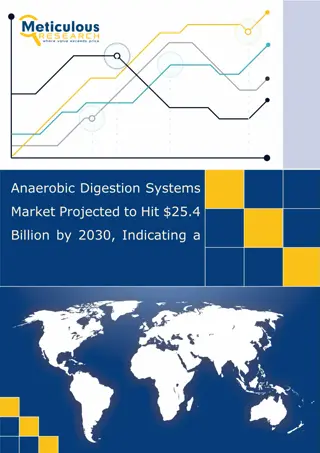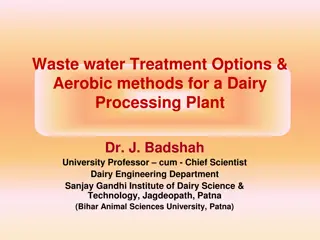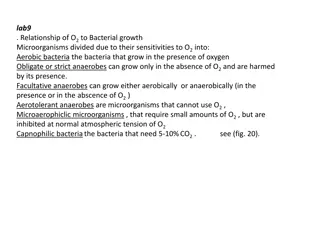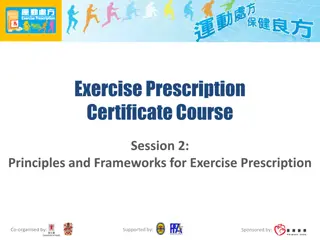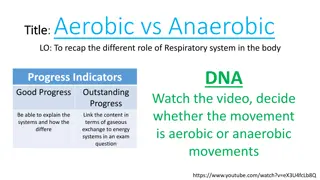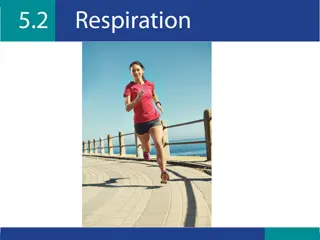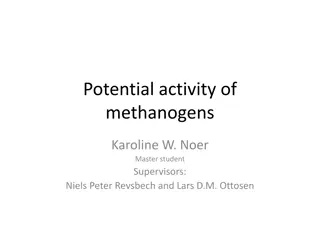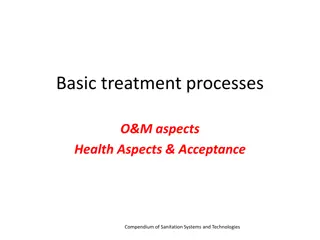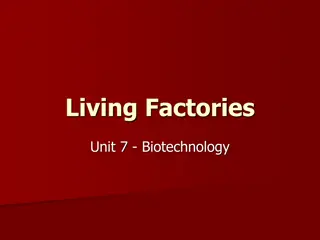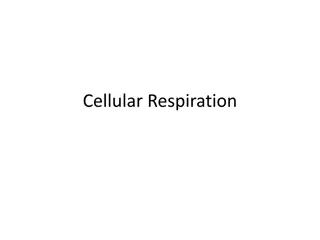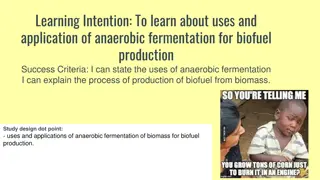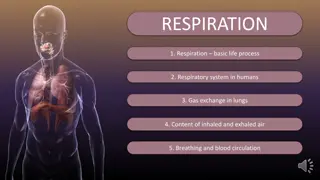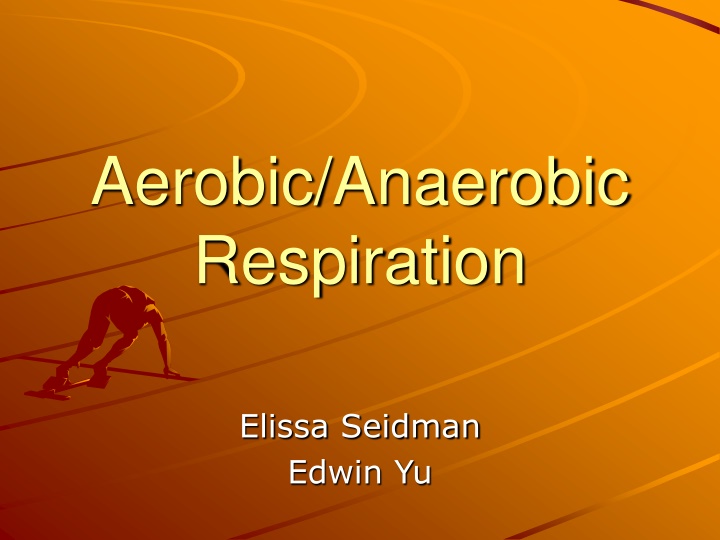
Aerobic and Anaerobic Respiration in Living Organisms
Explore the processes of aerobic and anaerobic respiration in living organisms, how sugars are broken down to produce energy, and the impacts of oxygen presence on glucose breakdown. Learn about the differences between aerobic and anaerobic respiration, the effects of fermentation, and the chemical formulas involved. Discover the importance of preparation through practice, proper nutrition, and hydration for endurance activities like marathons.
Download Presentation

Please find below an Image/Link to download the presentation.
The content on the website is provided AS IS for your information and personal use only. It may not be sold, licensed, or shared on other websites without obtaining consent from the author. If you encounter any issues during the download, it is possible that the publisher has removed the file from their server.
You are allowed to download the files provided on this website for personal or commercial use, subject to the condition that they are used lawfully. All files are the property of their respective owners.
The content on the website is provided AS IS for your information and personal use only. It may not be sold, licensed, or shared on other websites without obtaining consent from the author.
E N D
Presentation Transcript
Aerobic/Anaerobic Respiration Elissa Seidman Edwin Yu
- The Marathon - If somebody challenged you to a run a race, how should you prepare to win? 1.Practice 2.Eat the right foods 3.Drink the right liquids
All living organisms break down sugars to get energy. In humans this breakdown usually occurs with oxygen.
Aim: To understand how Aerobic and Anaerobic Respiration Occurs
SWBAT: Learn how the type of sugar affects the rate of respiration. Learn how the concentration of sugar affects the amount of energy produced. Determine the rate of respiration while using yeast to breakdown different sugars.
What is Aerobic Respiration? The breaking down of sugar to produce energy where oxygen is present. + Enzymes + + 6 CO 6 6 36 C H O O H O ATP 6 12 6 2 2 2 Glucose + Oxygen Carbon Dioxide + Water+ Energy
When We Exercise After two minutes of exercise, the body responds by supplying working muscles with oxygen. When oxygen is present, glucose can be completely broken down into carbon dioxide and water
Anaerobic Respiration refers to the oxidation of molecules in the absence of oxygen to produce energy It is also known As Fermentation
What happens when fermentation occurs? 1. In Muscle Cells- During extraneous activities, the oxygen in the muscle tissue is decreased to an extent that aerobic respiration does not occur at a sufficient rate. Hence, there is a buildup of lactic acid and your muscles get tired 2. In Yeast- The fermentation end product is ethyl alcohol, and CO2
Chemical Formula for Anaerobic Respiration + Enzymes + + 2 CH 2 CO 2 4 ATP C H O CH OH ATP 6 12 6 3 2 2 Yeast Energy + Glucose Ethanol + Carbon Dioxide + Energy
Lab Experiment We will be testing four different drinks to see which will give us the most energy
So how do we decide which is best? Hint: Go back to the formula
+ Enzymes + + 2 CH 2 CO 2 4 ATP C H O CH OH ATP 6 12 6 3 2 2 We can measure the carbon dioxide released by each drink in the enzyme
Lab Procedure CO2 Gas Sensor to measure total concentration of CO2 CO2 Gas Sensor
Lab Procedure Incubate the yeast solution in a 37 40 water bath Label the five test tubes G, C, F, M, and W Pour 2.5 mL of Gatorade into the test tube labeled G Pour 2.5 mL of Coke into the test tube labeled C Pour 2.5 mL of fruit juice into the test tube labeled F Pour 2.5 mL of milk into the test tube labeled M Pour 2.5 mL of water into the test tube labeled W Lightly stir the yeast suspension to mix the yeast that settled to the bottom. Put 2.5 mL of the yeast suspension into all five of the test tubes. Then incubate the test tubes for 10 minutes in the water bath. Place the Gas Sensor, and start collecting the data. for 4 minutes.
This powerpoint was kindly donated to www.worldofteaching.com http://www.worldofteaching.com is home to over a thousand powerpoints submitted by teachers. This is a completely free site and requires no registration. Please visit and I hope it will help in your teaching.




